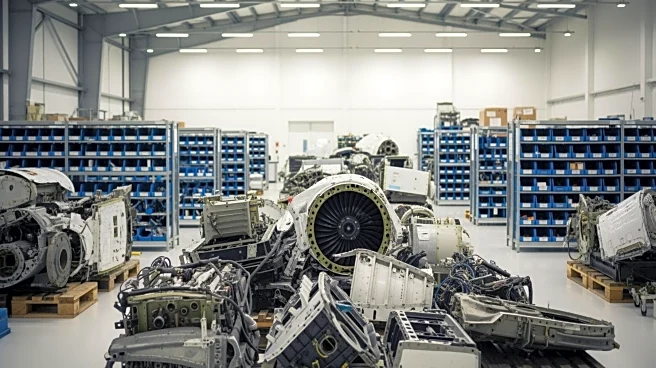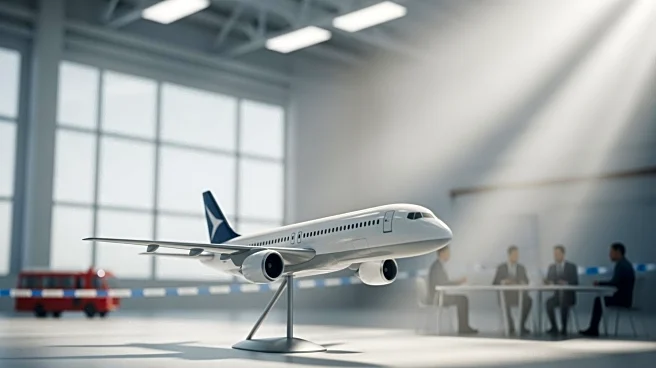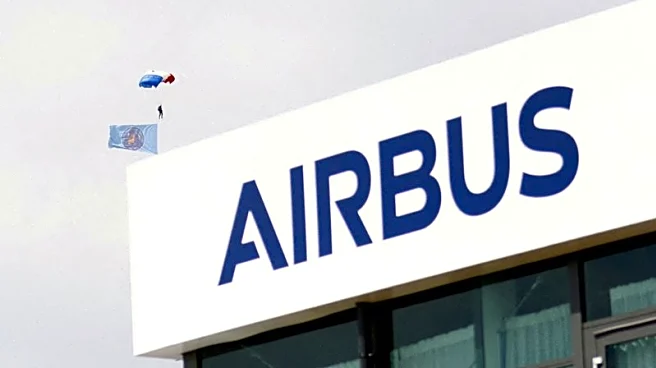What's Happening?
Major aircraft and engine manufacturers are adopting more proactive strategies to address ongoing supply chain challenges. These companies, traditionally reliant on passive tactics for aftermarket benefits,
are now actively engaging in the supply chain to meet the high demand for older aircraft products. The shift is driven by persistent material shortages that have hindered new aircraft deliveries, falling short of both original equipment manufacturers' (OEMs) projections and customer expectations. Boeing, for instance, is enhancing its involvement in used serviceable material (USM) to ensure a steady supply of high-demand spare parts. This includes a recent agreement with Unical Aviation subsidiary Ecube to dismantle retired aircraft for parts. Similarly, CFM International, along with its co-owners GE Aerospace and Safran, is focusing on repair development to supplement new parts production, particularly for the CFM56 and Leap engine families.
Why It's Important?
The proactive involvement of manufacturers in the supply chain is crucial for maintaining the operational efficiency of airlines, especially as new aircraft deliveries face delays. This shift not only helps in managing the current demand for spare parts but also reduces the cost of ownership for operators by prioritizing repairs over new parts. The strategy benefits airlines by lowering overhaul costs and lessening the demand for new materials, which is vital in an industry grappling with supply chain constraints. As manufacturers like Boeing and CFM International invest in repair capabilities and expand their supplier base, they are better positioned to support airlines in keeping older aircraft operational, thereby mitigating the impact of delivery delays on fleet management.
What's Next?
Manufacturers are expected to continue expanding their supplier networks to address material shortages and improve service delivery. This may involve onboarding new suppliers and increasing production capacities. Airlines, on the other hand, should prepare for potential delays and service inconsistencies in the aftermarket sector. The ongoing adjustments in supply chain strategies are likely to influence future investment decisions and operational planning within the aviation industry. As manufacturers and suppliers work towards more predictable demand forecasting, the industry could see a gradual improvement in supply chain resilience.
Beyond the Headlines
The shift towards active supply chain management by manufacturers highlights a broader trend of increased collaboration and transparency between OEMs and suppliers. This approach not only addresses immediate supply chain challenges but also sets the stage for long-term improvements in the aviation industry's operational efficiency. By sharing demand forecasts and investing in repair capabilities, manufacturers are fostering a more resilient supply chain that can better withstand future disruptions.












